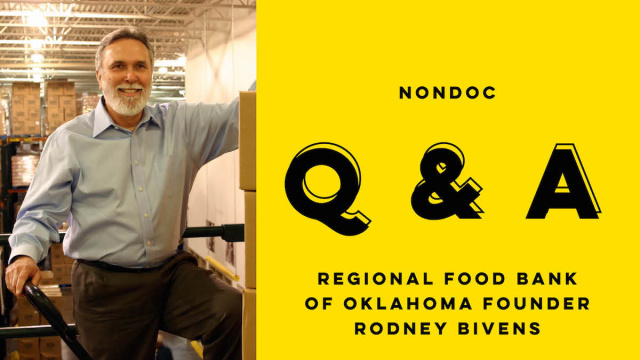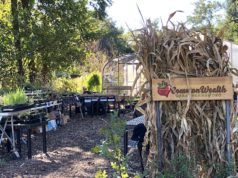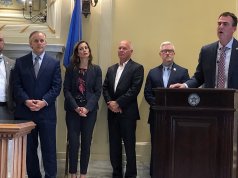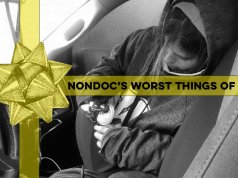Oklahoma consistently ranks among the hungriest states in America. That’s why the Regional Food Bank of Oklahoma constitutes such a vital charity.
Since 1980, food bank founder Rodney Bivens has made it his mission to increase food security for Oklahomans. After 36 years of “fighting hunger, feeding hope,” the Chickasha native is scheduled to retire from his post June 30, pending the selection of a successor.
Below, Bivens answered questions via email regarding why the most powerful nation in the world struggles with food insecurity, how his organization overcame a Christmas shortfall in 2015, and his tips for growing a successful garden. Responses have been lightly edited for style and grammar.
What is a Food & Resource Center? How many do the Regional Food Bank operate, and do any offer fresh fruit or vegetable access?
Food & Resource Centers are part of a new initiative to provide clients with greater access to food through extended hours and days of operation; increased access to fresh fruits and vegetables to improve health; a client-choice shopping experience, and a venue for connecting clients to other community resources to help individuals and families either get back on their feet or help break the cycle of poverty. Food & Resource Centers look like small grocery stores, complete with grocery carts, fresh produce, milk and dairy, and a frozen-foods section.
The Regional Food Bank launched the Food & Resource Center pilot program in 2012 to address both the needs of Oklahomans struggling with hunger and the needs of the community.
Once established, Food & Resource Centers are designed to be self-supporting. The Regional Food Bank continues to support the centers with ongoing training, capacity building and priority access to food and equipment grants, as well as guidance on fundraising, marketing and volunteer management.
Additional Food & Resource Centers are planned throughout the Regional Food Bank’s 53-county service area based upon need and community support. Food & Resource Centers are built to fit the needs, look and feel of the community where they are located.
The food bank recently faced a shortage leading up to Christmas. Were you able to offset that shortage, and how can the food bank mitigate such shortages in the future?
Thanks to the generosity of Chesapeake Energy Corporation, the Cresap Family Foundation and countless Oklahomans, more than $3.5 million was raised for the Regional Food Bank of Oklahoma through the organization’s holiday match program. Between Nov. 15, 2015, and January 15, Chesapeake and the Cresap Family Foundation matched all donations to the Regional Food Bank, up to $500,000.
The generous outpouring of support from the community in response to the match definitely helped with our ability to purchase much-needed food, but our overall food donations are still down approximately 6 percent compared to this time last year. That amounts to around a 2 million-pound shortfall. Because we only control approximately 20 percent of our inventory (the food that we purchase), we are dependent on donations from local food companies, national manufacturers and Feeding America.
BY THE NUMBERS
49.9 million: Pounds of food and products distributed during fiscal year 2015
41.6 million: Meals distributed in central and western Oklahoma
9.6 million: Pounds of food volunteers sorted and packed last year
$2.8 million: Labor costs saved through volunteers
656,000: Oklahomans struggling with hunger
130,000: Volunteer hours donated
116,000: Oklahomans the Regional Food Bank feeds weekly
54,000: Children the Regional Food Bank feeds weekly
34,000: Volunteers during last fiscal year
1,250: Charitable feeding programs and schools that contribute to the food bank
9 percent: of seniors in Oklahoma struggles with hunger
4 percent: The food bank’s administrative and fundraising costs
$1: Provides funding for five meals
Because our administrative and fundraising costs are less than 4 percent, we are able to use 96 cents out of every dollar toward our mission. For every dollar donated, we are able to return the equivalent of five meals to the people we serve. Our staff is working hard year-round to ensure that we have enough food and funds to feed the one in six Oklahomans that have inconsistent access to food.
We recently ran a commentary in which one of our contributors suggested that gardening programs for school children could help teach them valuable lessons while also addressing food deserts in their communities. What are your ideas regarding solutions to the problem of food deserts in the OKC metro?
Community gardens and educating children on where food comes from is definitely a move in the right direction. The Regional Food Bank has launched a new initiative designed to target food distributions to metro-area food deserts and improve the overall health of people who struggle with hunger. The program is called Fresh Rx, and it combines healthy food distributions, targeted clinical care, nutrition education and wellness resources in an effort to eliminate key barriers to improved health, like lack of access to healthy food and transportation challenges. We are currently partnering with several health organizations to track the overall effectiveness of the program in improving health outcomes.
The Regional Food Bank also operates a Fresh Food Mobile Market that provides fresh produce in under-served areas and food deserts once per month in eight locations. Each Fresh Food Mobile Market provides clients an average of 27 pounds of fresh fruits and vegetables. Through this program last fiscal year, 520,477 pounds of fresh produce was distributed to clients.
The Regional Food Bank also provides nutrition education, cooking demonstrations and health recipes through a full-time resident AmeriCorps member, whose primary focus is nutrition education.
Healthy Living Pantry Boxes were developed with food carefully selected to meet the needs of clients living with chronic diseases such as diabetes and hypertension. They are distributed by “prescription” from health care professionals.
How does the wealthiest nation on earth have such low food security for much of its population?
Although Oklahoma’s general unemployment rate is comparatively low, we still struggle with issues of significant underemployment. Approximately 8.2 percent of Oklahomans are only employed part time because they are unable to find full-time work. Many of the people we serve are working more than one minimum-wage job, and they simply can’t make ends meet.
Also, Oklahoma has significant issues with low-wage jobs. Thirty percent, or nearly one-third, of our jobs exist in occupations with a median salary below the poverty line. Oklahoma is 37th among the states in this category, meaning we have issues concerning poverty-level pay.
It’s been mentioned that you plan to put in a home garden during the beginning of your retirement. What plants do you intend to grow, and what are your top-three gardening tips for those wanting to grow food at home?
I intend to plant a variety — tomatoes, cucumbers, squash, okra and bell peppers, to name a few. My top-three gardening tips would probably have to be:
- Take the time to prepare your soil — and use organic materials. It will save you time in the long run;
- Consider putting in a raised bed garden — it will save your back and cut down on the weeds; and
- Put in a drip irrigation system — your plants will appreciate it, and your crop will be bountiful!
For more information, or to make a tax-deductible donation to the Regional Food Bank, visit regionalfoodbank.org or call (405) 600-3136 (or 972-1111). Those interested in volunteering may register here.






















